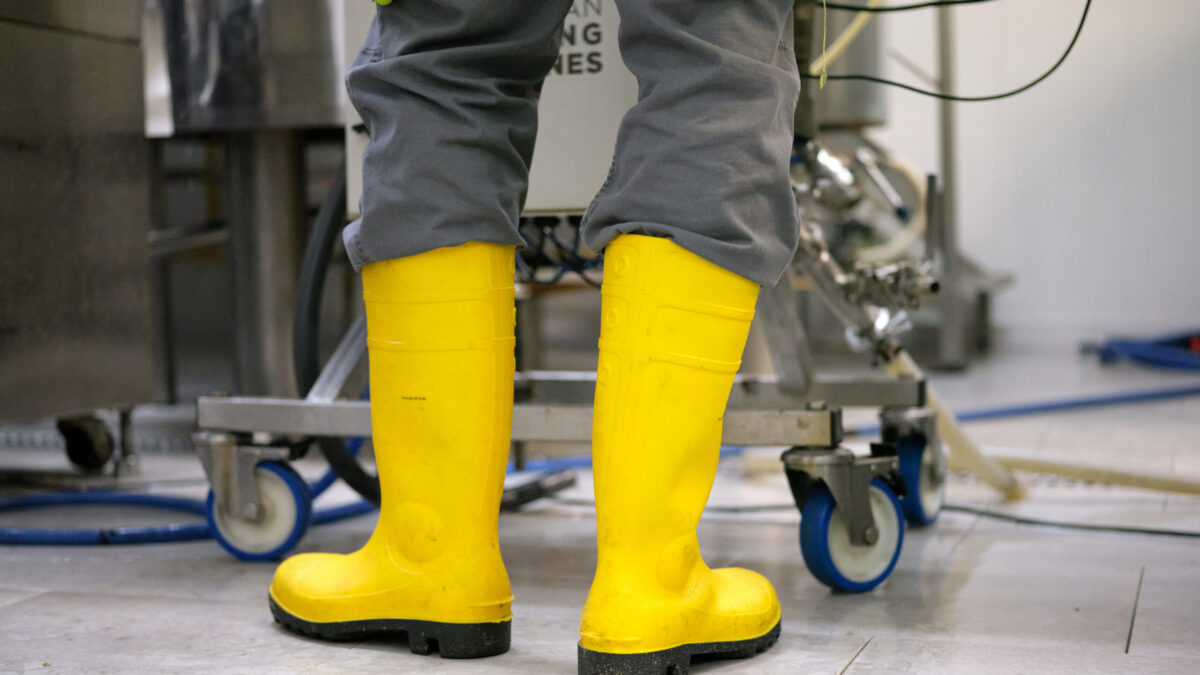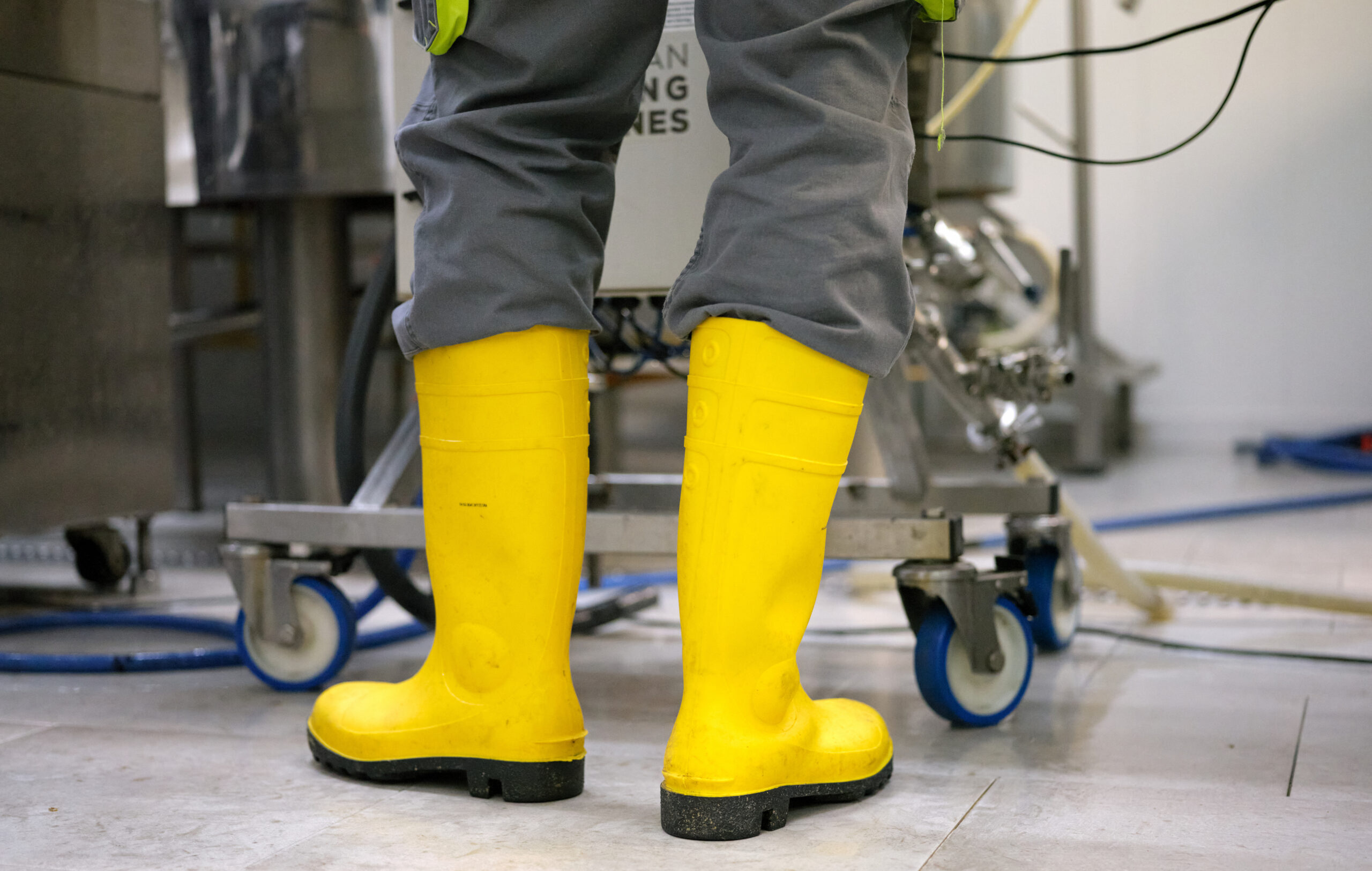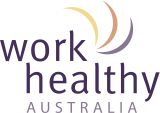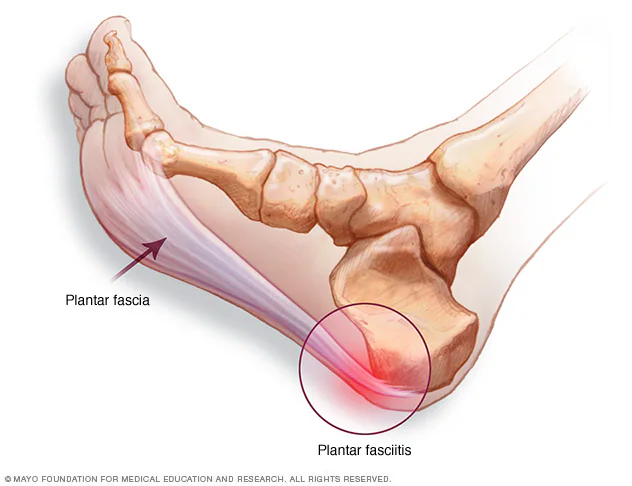
Certain types of PPE and work footwear, such as gumboots, might not allow the foot to move freely and don’t provide support for the foot's arches.
Heel pain (plantar fasciitis) is a common complaint across the workforce, affecting physically active and sedentary individuals. The prevalence of this injury is significantly higher in workers in routine and manual occupations.
What is plantar fasciitis?
The plantar fascia is a taut band of tissue located on the sole of the foot. Its role is to maintain the foot’s normal biomechanics, provide arch support, and absorb shock.
Heel pain can arise from the degenerative irritation of the plantar fascia, commonly due to repetitive strain. Plantar fasciitis occurs in about 10% of the general population, with 83% of affected individuals being working adults between 25 and 65 years old.
Risk factors
Risk factors for developing plantar fasciitis include:
- prolonged walking, standing or weight bearing
- being overweight
- having limited ankle mobility
- having excessive pronation or supination
- wearing shoes with poor arch support or stiff soles
- being middle-aged or older
- practising certain sports, such as running, dancing or aerobics
What are the symptoms?
- Gradual onset of sharp heel pain
- The pain is worse in the morning and towards the end of the day
- Pain is the most intense in the first few steps after inactivity
- Symptoms may worsen after prolonged periods of weight-bearing
- Barefoot walking on hard surfaces causes increased heel pain
- Tightness in the calf and Achilles is common

Early intervention is key
Plantar fasciitis can resolve on its own if proper care is given. The natural healing time for this condition is between 6 to 18 months, sometimes longer. This can lead to dissatisfaction from the patient, practitioner and site contacts. Experts agree that early recognition and intervention are likely to lead to a short course of treatment and a greater chance of success with conservative care.
What about footwear?
Certain types of PPE and work footwear such as gumboots might not allow the foot to move freely and don’t provide support to the arches of the foot. These types of footwear position the foot in a pronated position which increases the risk of developing plantar fasciitis. Due to this positioning, the foot’s intrinsic muscles that make up the arches become weaker. Therefore, it inhibits proper foot and leg biomechanics.
Shoe inserts that provide a thicker more cushioned sole or arch support have been shown to decrease pain associated with long periods of walking or standing. These can be purchased over the counter, making them easily accessible.
Some work modifications that may lower the risk for plantar fasciitis include:
- Reducing time walking or standing on hard surfaces (e.g., allowing workers to alternate between sitting and standing postures)
- Providing cushioning mats for concrete surfaces

Treatment Options
The treatment of plantar fasciitis is best managed conservatively. Conservative care often starts with patient-directed therapies and advances to practitioner-prescribed modalities based on how the patient’s symptoms respond over weeks to months. Within this time, 90% of patients will improve with conservative care. This condition often takes time to see results, so patience is key. Many things can be done to assist in recovery such as:
- Employers should encourage workers to seek treatment early as soon as symptoms present. This can reduce the chance of it progressing into a chronic condition which makes symptom reduction even more challenging.
- Once they have presented there are a variety of hands-on treatment options that can be provided to reduce symptom severity. Taping/strapping is a modality that can be utilised to see if a shoe insert would be beneficial before purchasing.
- A rehabilitation program will be given to stretch and strengthen the foot and surrounding musculature. An active approach is vital to recovery. This type of
- condition will require the patient to partake in rehab consistently to see the desired effect.
- Educating the patient is vital to recovery. Developing a deeper understanding can lead to increased compliance with advice and rehab.
- Depending on the symptom severity and response to care and advice duty modifications may be required to de-load the tissue.
- If symptoms persist after several weeks to months with minimal change further investigation such as imaging may be warranted.
Conclusion
Plantar fasciitis can be a very debilitating and painful condition. Onsite early management and intervention is best to increase the chance of recovery and decrease the time lost from this injury.
Sign up to our monthly enewsletter
"*" indicates required fields

